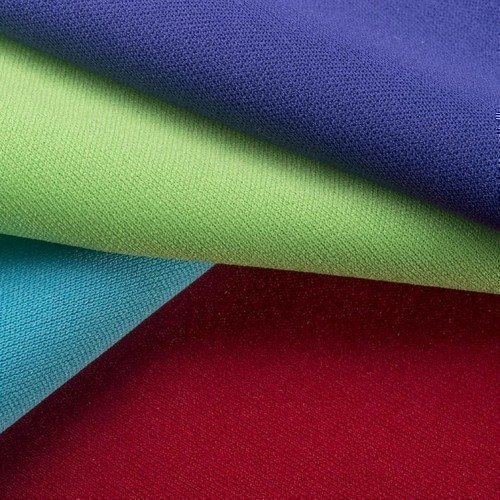The Fundamentals of Quality Assurance in the Textile Industry



The fashion business has been growing by leaps and bounds over recent years, thanks to the constantly evolving fashion trends and the increasing need to look and feel good. It can rightfully be termed one of the biggest industries due to its growing inclination towards e-commerce.
The demand for textiles, which makes up for a large chunk of the apparel business, is also on an upward trajectory in recent times. Be it in households or workplaces, textiles are vividly in use for:
- table covers
- bedsheets,
- cleaning devices,
- window shades,
- carpeting,
- furnishing,
- towels, and
- handkerchiefs.
They are also incorporated in industrial and scientific processes, including filtering. One of the many reasons behind the prolific growth of the global textile market is the abundance of natural fibers, mainly cotton, in countries such as China, India, and the U.S.A.
Competitive Landscape
Digging deep into the recent trends, the competition in the textile industry is running exceptionally high among all the brands. In simpler terms, if the quality is not up to the mark, or the product sellers and vendors are failing to match the industry and customer requirements, they would be wasting a great deal of money, time, and resources whilst inevitably falling behind their competition. Also, most of the apparel brands are consistently pressured towards increasing their output and maximizing profits, thus bearing the brunt of various problems in the quality management systems.
Eye on Product Enhancements

Many brand owners at times think that enhancing the quality of their products will result in increased operational costs and a decreased value of Return on Investment (ROI). Driven by the rise in these threats, various actions have been undertaken by fashion industry participants towards incorporating some of the best practices for ensuring the quality of a brand.
Taking cue from the significant strides in the textile business, here is an in-depth look at how quality assurance in the garment industry is revealing its importance to cater to the humongous demand.
What is Quality Assurance?
Quality assurance (QA) can be defined as a systematic process that determines if a product meets the quality standards. It can be time and again described as a worthy investment as this process not only helps fashion brands to prevent and address mistakes but also pushes them towards ensuring that their services and products are meeting high standards.
In addition to keeping up with the industry norms, quality assurance is an essential space when it comes to maintaining the consistency of the brand offerings. It also looks at the outcomes of the manufacturing process, in a bid to deliver some high-quality and reliable finished products. If you are on the lookout for cost and time savings, boosted customer confidence, along with long-term profits, then quality assurance would aptly fit the bill.
Quality Assurance in Textiles

The role of quality assurance in the garment industry has been significantly expanding, considering its stupendous advantages to help your business grow exponentially. Although quality assurance and quality control seem to be complex areas of the apparel industry, they lend quality to each of the steps in the manufacturing process, inclusive of designing, production, and beyond.
Below are some points that provide insight into the fundamentals of quality assurance:
1. Quality assurance is not quality control
Firstly, one needs to understand that quality control is an important aspect of quality assurance. Quality assurance helps in building quality control, in juxtaposition with its general understanding of assessing for quality after manufacturing, as well as sorting into various acceptable and unacceptable categories. In fact, accessories and apparels, among other textile commodities, are assessed for quality in all phases of production – during the pre-production phases, in production, along with a final inspection once the product has been completed.
Quality control occurs at the sourcing stage of the raw materials through the final stages of production. One also needs to know that while quality control is product-focused, quality assurance is a process-focused space.
2. Quality assurance is prioritizing the quality of the textiles, not the price
Quality is gaining prime importance among most consumers in comparison to product prices. To support this further, quality in garment manufacturing can be termed a very broad subject since it encompasses both processes and products. It typically comprises the characteristics of a saleable good to determine its desirability, which could be controlled by a specific manufacturer for meeting certain basic requirements.
3. Well-known quality assurance methods
In order to deploy quality assurance in the garment industry, below are two of the prominent approaches that are being vitally adopted in the recent years:
- Testing: A commonly used method for making sure that the production process is up to the mark with all the necessary standards, and the material in the garment production is of good quality and is being handled accordingly
- Inspection: This mainly deals with the inspection of raw materials, including fabrics and accessories, together with the inspection of the process of manufacturing, and subsequently the final product inspection.
In a nutshell, quality is a big question that underlines customer satisfaction. The presence of superior quality not only enhances the value of the products or services, but also helps you and your brand name to build a good reputation. This, in turn, adds a humongous profit-generating edge, leading to higher sales, customer satisfaction, and foreign exchange for the country. The perceived quality of the textiles is a result of numerous aspects that when combined attain the desired satisfaction levels for customers. If you are a textile-selling newbie, looking for sourcing materials and products, contact Fashinza.
Hence, rightfully, quality assurance has emerged as a proactive quality process, designed for preventing any defects via testing and improving the processes concerning designing, producing, evaluating as well as assessing products for ensuring that the desired levels of quality are met.



















